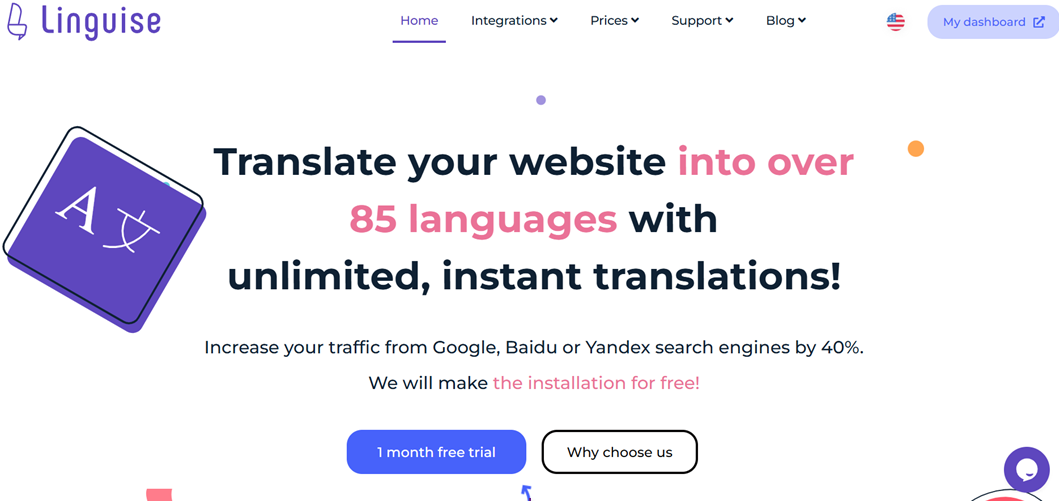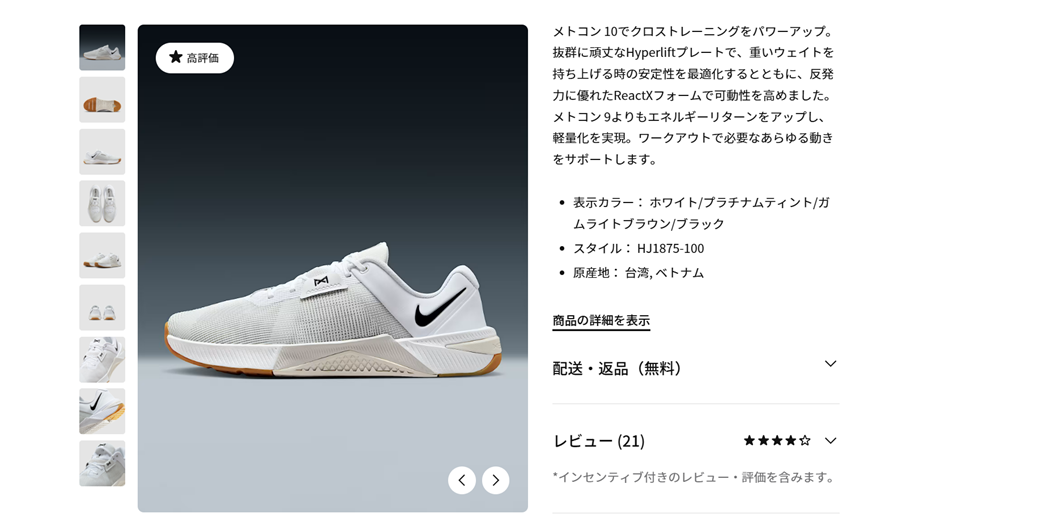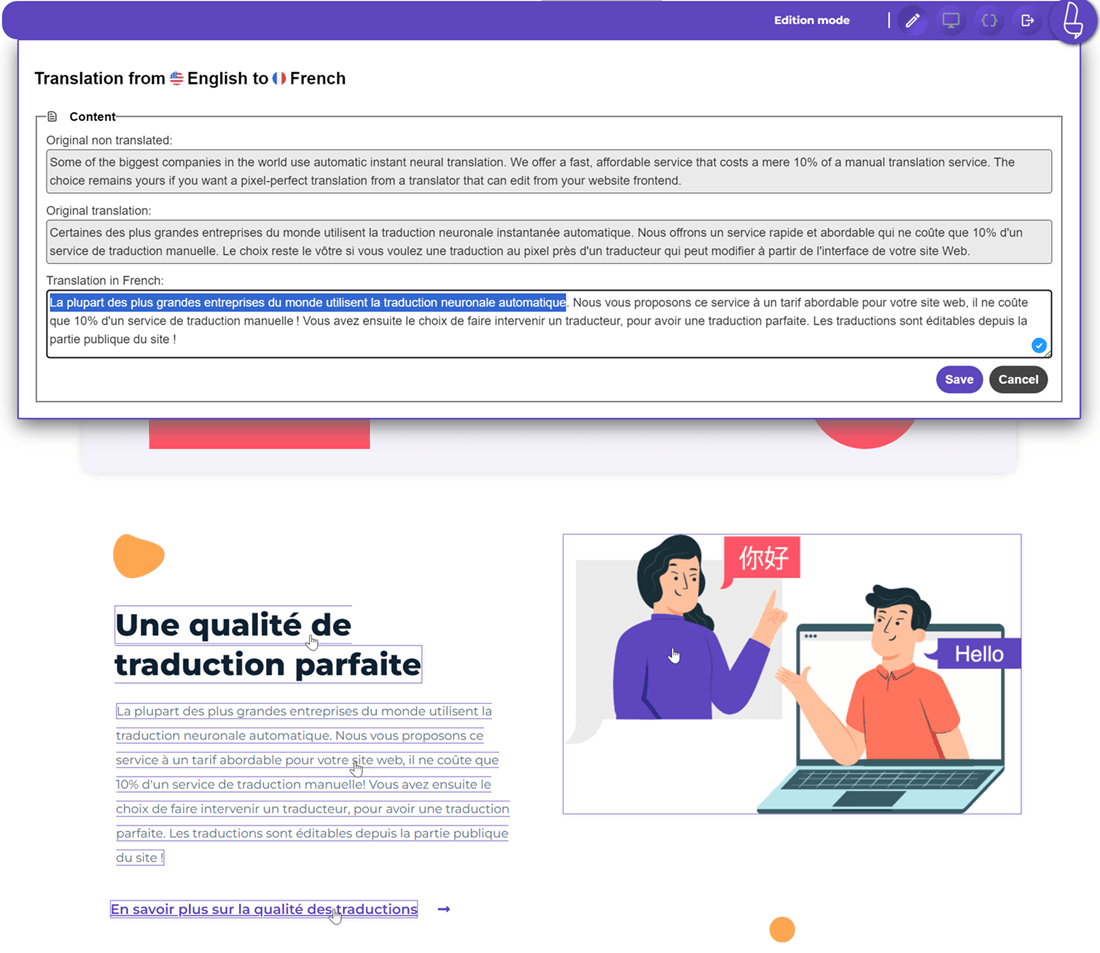Translating product catalogs transforms the shopping experience to make it relevant in various global markets. With thousands of SKUs (stock keeping units) and product details changing every week, the ability to translate and manage dynamic content on a large scale is a determining factor between brands that only appear in local markets and those that are international.
Therefore, this article will help you understand why multilingual catalogs are the foundation of global growth, break down the challenges of translating dynamic content, and build a measurable strategy. Let’s get started!
Business impact and ROI of translating product catalog

Research shows that the impact of product catalog translation and localization should not be underestimated. Emplicit found that full localization, adjusting language, context, and culture, rather than relying on literal translation, can increase conversion rates by up to 70% in international markets. Even a simple step, such as translating ads and landing pages, can boost conversions by 13%.
Meanwhile, Ovesio reported that the use of AI-powered localization can deliver conversion increases ranging from 13% to 200%, depending on the strategy and quality of implementation. These figures highlight that strategic catalog localization directly impacts business revenue and ROI, especially when supported by automation and AI technology.
Challenges of translating dynamic product catalog

Translating constantly changing product catalogs involves language, update speed, team coordination, and quality consistency. Without the right strategy, this can hinder localization and damage the international customer experience.
High volume of SKUs and frequent product updates
If an online store has thousands of SKUs and frequently adds or updates products, the workload for the localization team will be very high. This process requires a translation system that can handle large scales without compromising accuracy. Every time there is an update, descriptions, attributes, or images may need to be updated again to remain consistent across all languages.
Without efficient management, new products may be delayed in reaching international markets, resulting in lost sales opportunities. Furthermore, inconsistencies in information can lead customers to encounter incorrect or outdated data, which may erode trust and result in sales losses.
Complex product attributes, descriptions, and metadata

Many product catalogs have technical attributes, detailed descriptions, and complex SEO metadata. These elements require precise translation because even a small mistake can change the meaning or make the information inaccurate. For example, a slight difference in size, material, or specifications can cause customers to misunderstand the product they are buying.
The negative impact is that customers may receive products that do not meet their expectations, triggering returns, negative reviews, and damaging the brand’s reputation in that market. This also has the potential to reduce multilingual SEO performance because irrelevant metadata will make products difficult to find on local search engines.
Integration with multiple systems
Product catalog localization often involves various systems such as CMS, PIM (Product Information Management), e-commerce platforms, and internal databases. Each system has different data formats, workflows, and update schedules. Without seamless integration, translated product data can get stuck in one system and not be synchronized across all sales platforms.
As a result, customers may see different product information on websites, mobile apps, and third-party marketplaces. This inconsistency can reduce customer trust, make them hesitant to buy, and even give the impression that the brand is unprofessional in managing its product information.
Risk of errors and inconsistencies without automation

Without automation, the translation process is prone to human error. Inconsistent terminology, text duplication, and contextually inappropriate translations often occur when everything is done manually. In a large catalog, these small errors can appear in hundreds of products at once.
These errors not only affect the professionalism of the brand, but can also confuse customers. For example, two different pages for the same product display conflicting information, this can make customers hesitate to continue with their purchase or even switch to a competitor.
Strategies for translating the catalog and managing dynamic products

The right approach not only speeds up the website localization process, but also ensures quality consistency, cross-system integration, and a positive impact on sales in the global market. Here are some strategies that can be implemented.
Automating translation workflows for large catalogs

Managing the translation of a product catalog containing thousands of SKUs that keeps growing every day can be exhausting if done manually. This process is time consuming and risks delaying the release of new products to international markets. By automating the translation workflow, updates can be completed almost instantly, ensuring that customers in different countries receive the same information just as quickly.
One effective way to achieve this is by using an automated translation solution that integrates directly with your site, such as Linguise, which can translate an entire catalog in real time without requiring manual input for each change.
For example, when a new product description is added or updated in the CMS, Linguise translation can instantly display translations into more than 80 languages, with the option for manual edits to ensure quality. The result is that teams are no longer bogged down with repetitive tasks, catalog updates run smoothly, and the international user experience remains consistent, even as products change rapidly.

Integrating translations with PIM and CMS systems
Integrating translations with Product Information Management (PIM) and Content Management System (CMS) platforms ensures that all product data, including technical specifications and marketing materials, remains synchronized across multiple channels. With this integration, updates made in the PIM automatically trigger translation updates in the CMS.
For example, an international fashion brand managing thousands of products in a PIM can instantly reflect updates. When the product team changes size or color options, the system sends the new data to the Translation Management System (TMS) for translation. It publishes it automatically on the multilingual website with no delay.
Handling multilingual SEO

Localizing a catalog goes beyond translating text, multilingual SEO is crucial to ensure products are discoverable in local search engines. This involves translating meta titles, meta descriptions, URL slugs, and image alt text in line with the target language.
For instance, an online store selling running shoes in the Japanese market would use the keyword “ランニングシューズ” on its product pages instead of a literal translation of “running shoes.” This would improve its ranking in Google Japan and local marketplaces like Rakuten.
With Linguise, this process can be automated while still optimizing for multilingual SEO. The platform supports translating SEO elements and customizing them for each target market without additional manual steps.

Quality control and human review processes
While automation speeds up the workflow, quality control and human review are critical for ensuring accuracy and cultural relevance. This typically involves editors or native speakers reviewing translations before publication.
For example, a global cosmetics company might translate product descriptions automatically, then pass them to local teams in each country to adjust beauty terminology and prevent meaning errors.
Linguise supports this workflow by enabling machine translation post-editing, allowing in-house or freelance translators to collaborate directly within the platform. This ensures the speed of automation is matched with the precision of human oversight.
Structuring content for scalability and frequent updates
Organizing content modularly makes translations easier to manage during large scale updates. Product descriptions, specifications, and promotional labels are separated into structured units, so only the changed segments need retranslation.
For example, if only the price or color changes, the system can detect and selectively update those translations without reprocessing the entire product description. This greatly reduces turnaround time and costs.
Version control and update tracking
Implementing version control for translated content allows teams to track changes and compare old versions with new ones. This makes it easier to roll back in case of errors and ensures that all product updates are well documented.
For example, a global SaaS platform uses version control to review the history of changes made to feature descriptions, ensuring marketing campaigns always use the latest approved version.
Collaboration and workflow standardization for cross-functional teams
Standardizing workflows across teams, from product managers to developers and localization specialists—prevents miscommunication and keeps everyone aligned on timelines. Creating SOP documents and using collaboration tools like Jira or Asana can streamline coordination.
For instance, when launching a new collection, the product team sets deadlines for data updates, the localization team aligns translation schedules accordingly, and developers ensure API integrations work without issues.
Measuring success (KPIs, conversion rates, and ROI)

Measuring the success of catalog localization requires tracking indicators like increased organic traffic from target markets, sales conversion rates, and ROI on translation investments. This data helps evaluate the strategy and refine future processes.
For example, an e-commerce business launching a Spanish version of its site can track the increase in traffic from Google.es and see whether conversion rates for specific products improved after translations were optimized for SEO.
Conclusion
Translating a product catalog is about delivering a seamless, culturally relevant shopping experience that resonates with international audiences. When done strategically, it improves user engagement and drives measurable growth in conversions and revenue. Businesses can efficiently manage dynamic product content at scale without sacrificing quality by combining automation, multilingual SEO, human review, and structured workflows.
With solutions like Linguise, brands can translate product catalogs in real time, optimize for multilingual SEO, and collaborate with human translators for post-editing, all in one streamlined platform. This ensures speed, accuracy, and scalability for global growth. If you want to see how easy and impactful it can be, try Linguise and turn your product catalog into a global sales engine.





